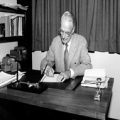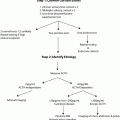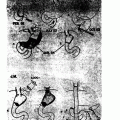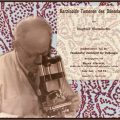John H. Sipple, MD in 1976, president of Couse Irving Memorial medical staff
Introduction
Multiple endocrine neoplasia type 2A (Sipple syndrome) was first described by John H. Sipple in 1961 [1]. It may be surprising to some that he was not an endocrinologist, pathologist, or surgeon, but a pulmonologist. He encountered the index patient as a third-year medical resident, established an association between thyroid cancer and pheochromocytoma through meticulous research into the literature, and published a case report identifying a syndrome named after him.
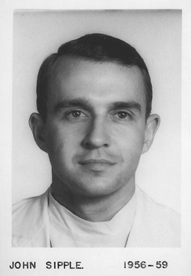

Fig. 1
John H. Sipple, M.D. in 1956, SUNY Syracuse
Childhood
John Harrison Sipple was born on July 1, 1930, in Cleveland, OH, and grew up in Lakewood, a suburb of Cleveland. His grandparents immigrated to the USA from Germany. His father John was a banker and lawyer, and his mother Marie was a homemaker. He had an older brother Richard. Sipple attended Lakewood High School, graduating as class valedictorian. In high school, he sustained a football injury and was treated with a full-body cast for 6 weeks. This experience as a patient sparked his interest in medicine as a career. He applied and was accepted to Northwestern, Colgate, and Cornell Universities. He chose to attend Cornell because he was offered a full scholarship for 4 years.
Education, Training, and Professional Career
At Cornell University, Sipple was a zoology major, and participated in football, lacrosse, and the men’s Glee club. At the time, it was possible at Cornell to combine the last year of college and the first year of medical school, thereby obtaining both Bachelor’s and M.D. degrees in 7 years. This allowed Sipple to have his first year of medical school supported by his undergraduate scholarship, and he therefore decided to continue his studies at Cornell University Medical College.
During medical school, Sipple was especially interested in internal medicine. The required diagnostic acumen was particularly appealing. He cites Dr. David P. Barr (1897–1977), professor and chairman of the Department of Medicine at The New York Hospital–Cornell Medical Center as a role model. He vividly recalled being impressed by an interesting patient brought in for demonstration to the class by Dr. Barr. This patient had thyrotoxicosis with classical findings of Graves’ disease. He matched into a rotating internship at the State University of New York Medical Center (SUNY) in Syracuse in 1955. He was very pleased with his internship and the Department of Medicine at Syracuse and so opted to take his residency in internal medicine in Syracuse, completing it in 1959 (Fig. 1). Sipple recalls, “The residency was excellent. It stressed learning, responsibility, teaching, and research in the teaching hospital, community hospitals, and a veterans’ hospital. We were on call every other night early on and maybe one of five by the third year. The main emphasis was on being competent as a diagnostician and consultant in internal medicine but also developing skills (clinical and research) in a subspecialty was encouraged.” His experiences during residency profoundly influenced his professional life: (1) though he was interested in all the subspecialties, he was presented with opportunities to work in the pulmonary laboratory in his spare time and he worked well with the pulmonologists; (2) he met the two men who would become his future partners; and (3) it was during his third year in residency that he encountered and decided to describe the patient in a manuscript entitled “The Association of Pheochromocytoma with Carcinoma of the Thyroid Gland” [1].
Having deferred his military obligation during medical school and residency, Sipple served in the US Air Force from 1959 to 1961 as chief of medicine at the 2845th USAF Hospital at Griffiss AFB in Rome, New York. This was between the Korean and Vietnam wars. At the conclusion of his military service, he accepted a 2-year National Institutes of Health (NIH)-sponsored pulmonary fellowship at Johns Hopkins Hospital, under Dr. Richard L. Riley (1911–2001), the prominent pulmonary physiologist and leader in pulmonary medicine. He was highly productive as a resident and fellow, publishing six papers on respiratory physiology and pulmonary topics. One year into the fellowship, he was offered a position as a pulmonary specialist by the two cardiologists that he had met as a resident in Syracuse, and whom he greatly respected. Faced with this choice, Sipple felt that he would derive greater satisfaction from practicing clinical medicine rather than continuing to perform research. He therefore joined the physician group Internist Associates of Central New York and began practicing internal medicine in 1962. In addition to establishing a thriving practice, he became a prominent member of the medical community in Syracuse. He developed an interest in the electronic medical record in the 1980s and designed his own system for the office. He held a number of important administrative and committee positions at Crouse Irving Memorial Hospital as well as at the University Hospital. He was active in the medical school. He was attending physician for one of the medical teams and made teaching and work rounds with the team 3 months each year. In addition, he made intensive care unit (ICU) pulmonary rounds with house staff, students, and respiratory therapists throughout the year. He also taught physical diagnosis to medical students yearly. He rose up the ladder of appointments and became a full clinical professor of medicine in 1977 at SUNY Syracuse. He was active in the Upstate New York Region of the American College of Physicians, serving as governor from 1989 to 1993. He became president of his practice group Internist Associates of Central New York from 1995 until his retirement in 2000 at age 70.
Family
Sipple married in 1955, the year he graduated from medical school. He met his wife Joy in Ohio, having attended the same high school though he graduated several years before her. She attended Kent State University, and majored in liberal arts (Fig. 2). She is an artist and avid gardener. Sipple states, “We have a great marriage. We work together to have a warm home environment and she took much of the responsibility for our home and children.” They had six children, four boys and two girls and 18 grandchildren. One son, Michael Sipple, followed in his father’s footsteps and became a practicing gastroenterologist in Syracuse, New York.
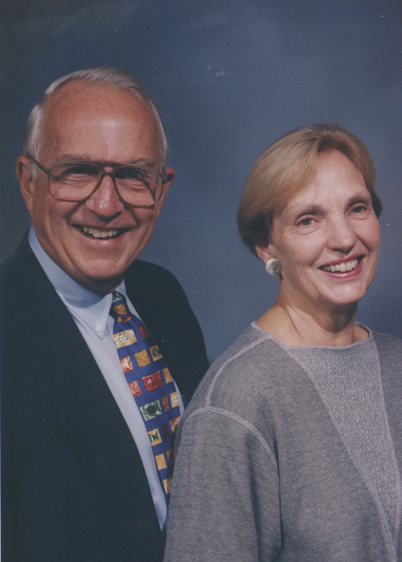

Fig. 2
John H. Sipple M.D. in 1988, at his 50th high school reunion, with his wife Joy
Description of Sipple Syndrome
In 1959, during his last year in residency, Sipple was consulted on a patient who was hypertensive after neurosurgery for an arteriovenous malformation (AVM) of the brain . The patient was a 33-year-old man, from a community near Syracuse, and had a wife and several young children. He presented to the Syracuse Veterans Administration Hospital after an onset of a severe headache, nausea, and vomiting, followed by left-sided weakness and lethargy. A lumbar puncture revealed bloody spinal fluid and elevated pressure. A large AVM was seen on a right carotid angiogram. A craniotomy was done to evacuate the hematoma. Postoperatively he developed fever, restlessness, and fluctuating blood pressure, as high as 240/120. Seventeen days later, he underwent a second craniotomy to relieve elevated intracranial pressure, another hematoma was evacuated, but the patient died 3 h later. A family history could not be obtained at the time of his hospitalization. Subsequently, a detailed family pedigree was obtained [2] .
Stay updated, free articles. Join our Telegram channel

Full access? Get Clinical Tree



